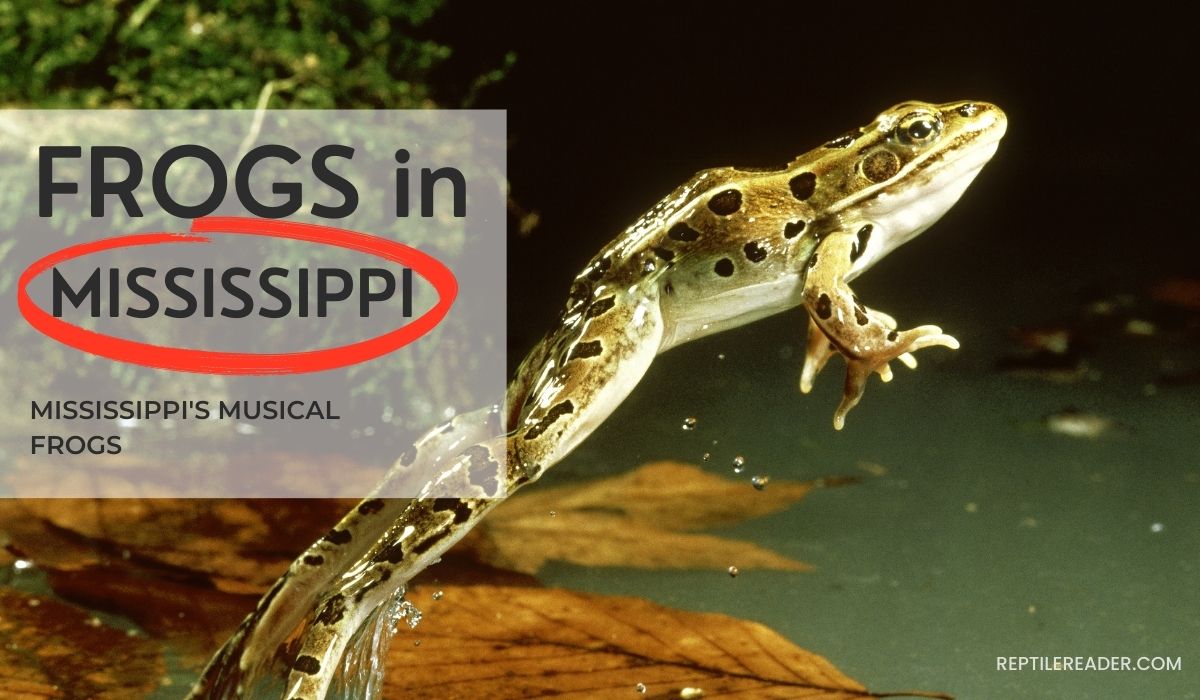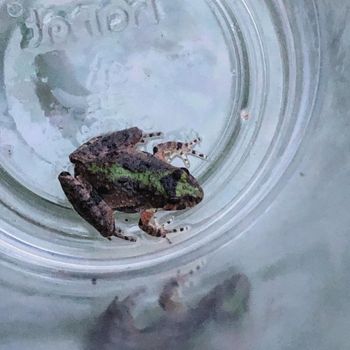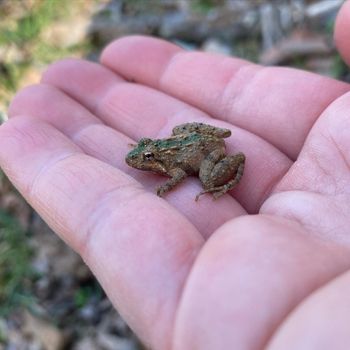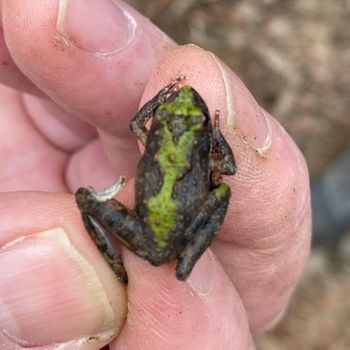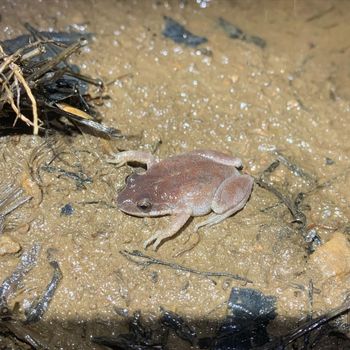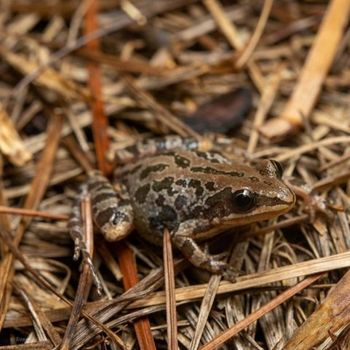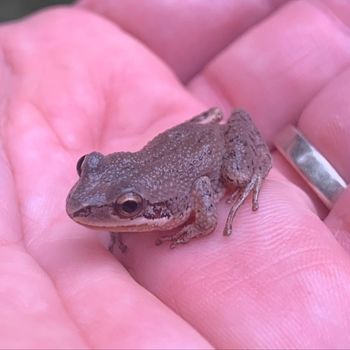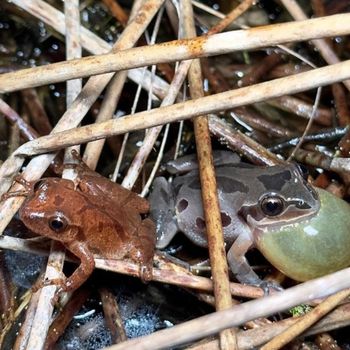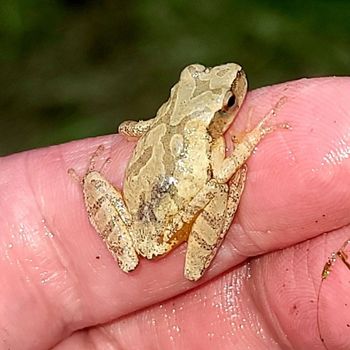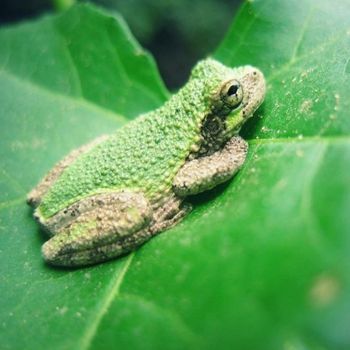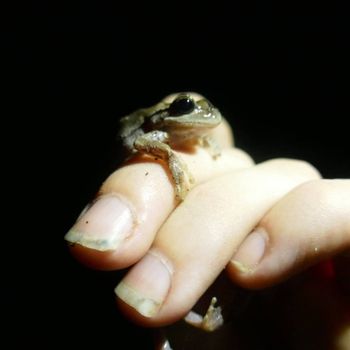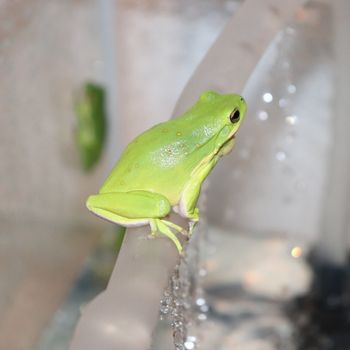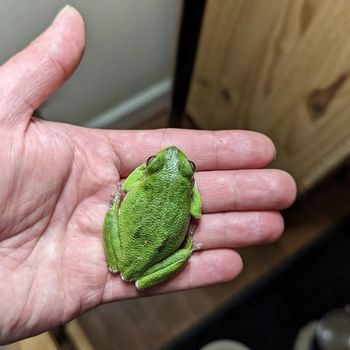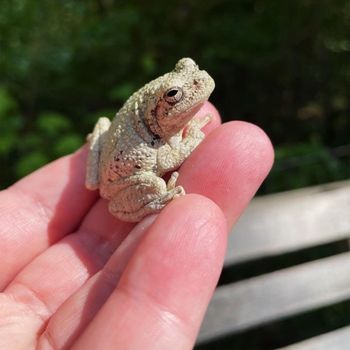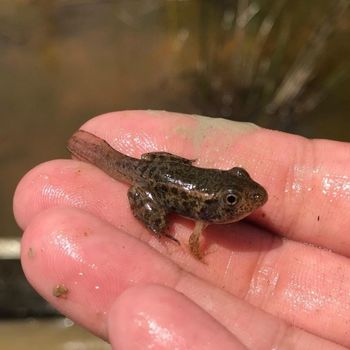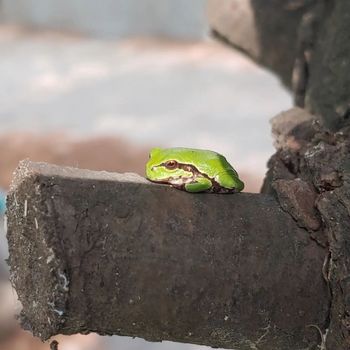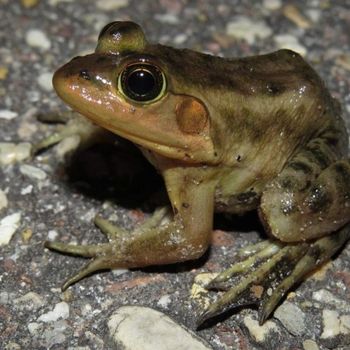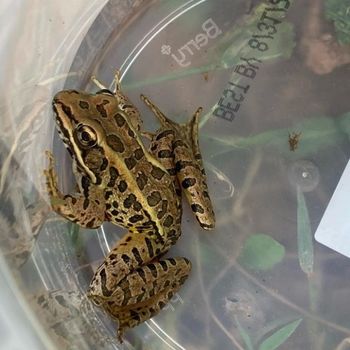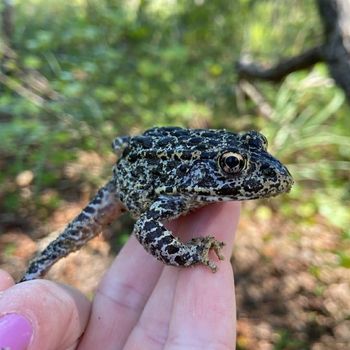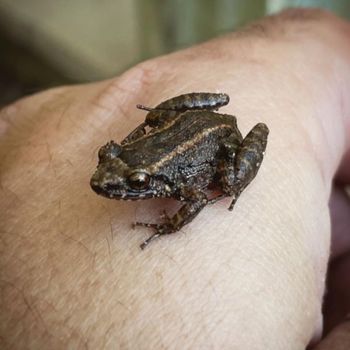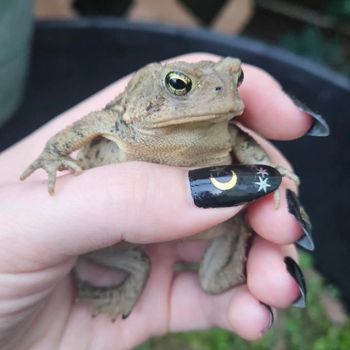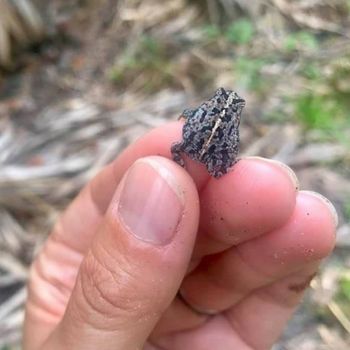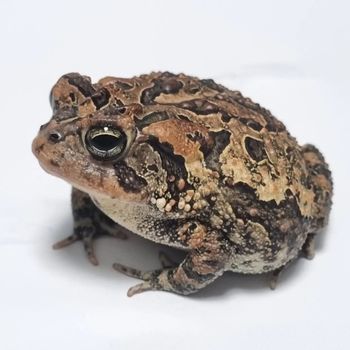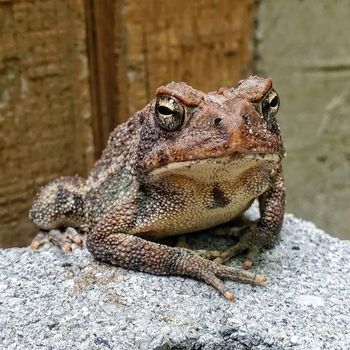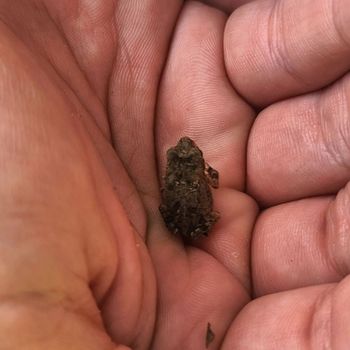Frogs in Mississippi: Mississippi’s Musical Frogs
Did you know that Mississippi is home to a wide variety of colorful and fascinating frogs? That’s right, with a whopping 32 species hopping around, there’s never a shortage of these little critters to discover.
From tree frogs to aquatic species, Mississippi’s diverse ecosystems provide perfect habitats for all kinds of amphibians. So, grab your field guides and binoculars, because today we’re going on a fun-filled froggy adventure.
Join us as we explore some of the incredible species of frogs found in the beautiful state of Mississippi. You will be amazed at the diversity and uniqueness that awaits you among these hoppy creatures!
| # | Name | Details | Image |
| 1 | Northern Cricket Frog (Acris crepitans) |
| 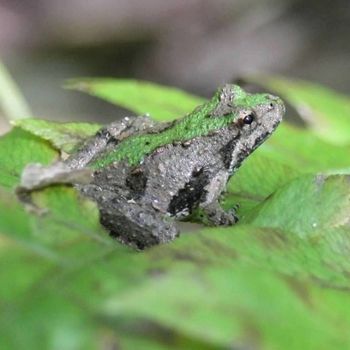 |
| 2 | Southern Cricket Frog (Acris gryllus) |
|  |
| 3 | Blanchard’s Cricket Frog (Acris blanchardi) |
| 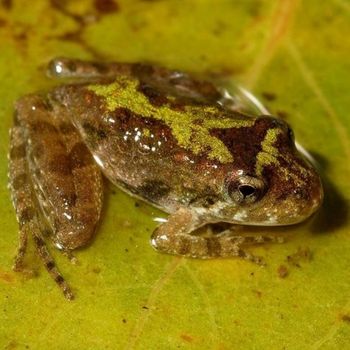 |
| 4 | Collinses’ Mountain Chorus Frog (Pseudacris collinsorum) |
| 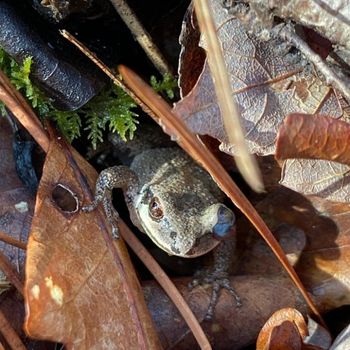 |
| 5 | Southern Chorus Frog (Pseudacris nigrita) |
| 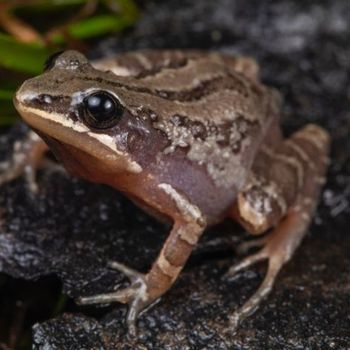 |
| 6 | Upland Chorus Frog (Pseudacris feriarum) |
| 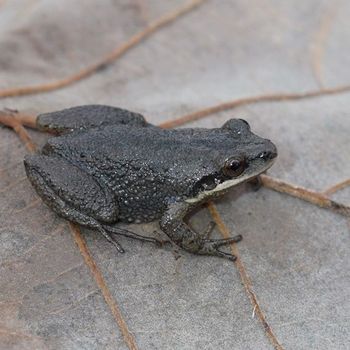 |
| 7 | Ornate Chorus Frog (Microhyla fissipes) |
|  |
| 8 | Spring Peeper (Pseudacris crucifer) |
| 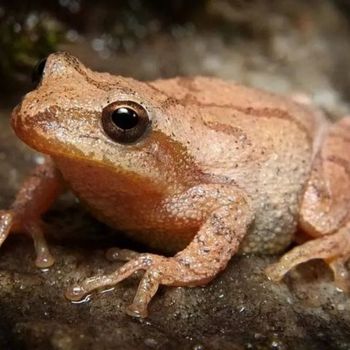 |
| 9 | Cajun Chorus Frog (Pseudacris fouquettei) |
| 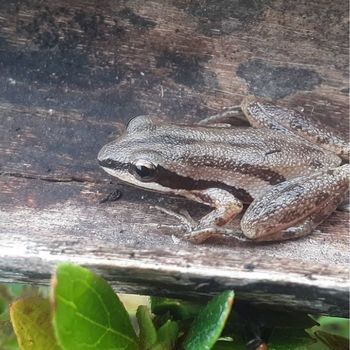 |
| 10 | Bird-Voiced Frog (Hyla avivoca) |
|  |
| 11 | Pine Woods Tree Frog (Dryophytes femoralis) |
| 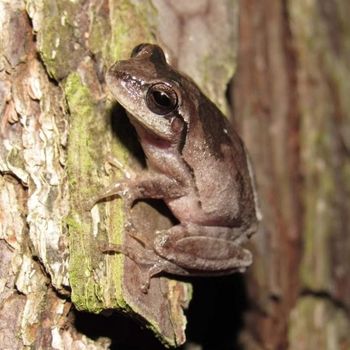 |
| 12 | Squirrel Tree Frog (Hyla squirella) |
|  |
| 13 | Barking Tree Frog (Hyla gratiosa) |
| 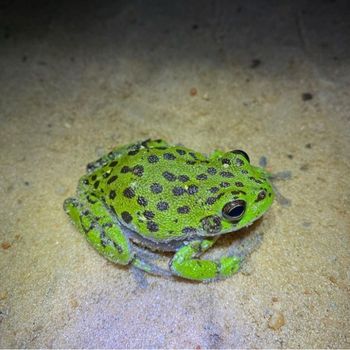 |
| 14 | Green Tree Frog (Litoria caerulea) |
| 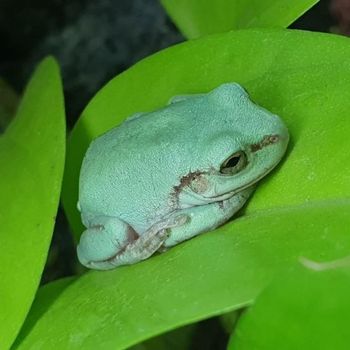 |
| 15 | Cope’s Gray Tree Frog (Hyla chrysoscelis) |
| 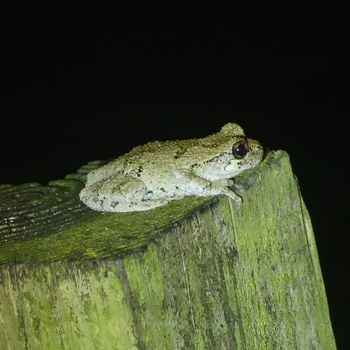 |
| 16 | Southern Leopard Frog (Lithobates sphenocephalus) |
| 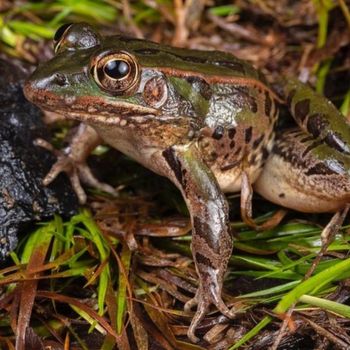 |
| 17 | Crawfish Frog (Lithobates areolatus) |
| 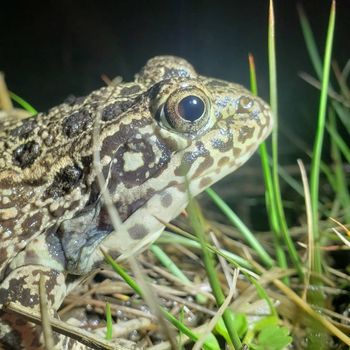 |
| 18 | Gopher Frog (Lithobates capito) |
| 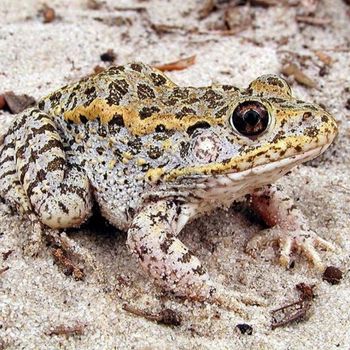 |
| 19 | American Bullfrog (Lithobates catesbeianus) |
| 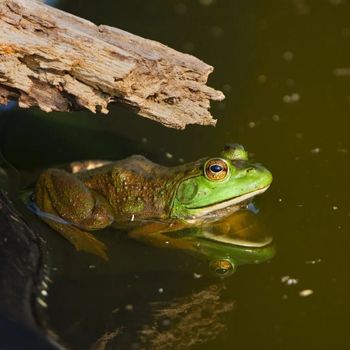 |
| 20 | Green Frog (Lithobates clamitans) |
| 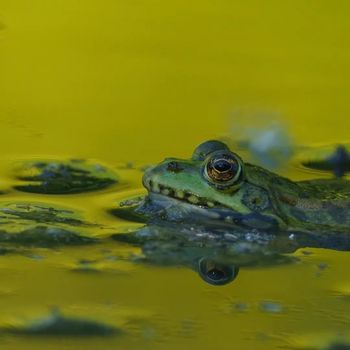 |
| 21 | Pig Frog (Lithobates grylio) |
| 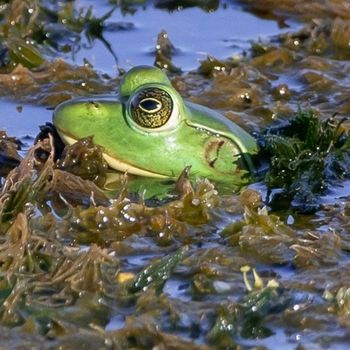 |
| 22 | River Frog (Amietia angolensis) |
| 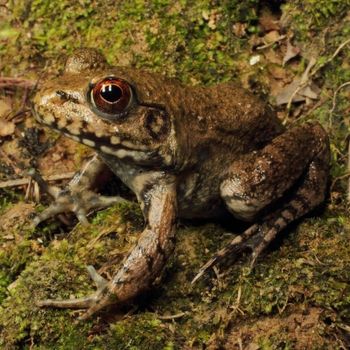 |
| 23 | Pickerel Frog (Lithobates palustris) |
| 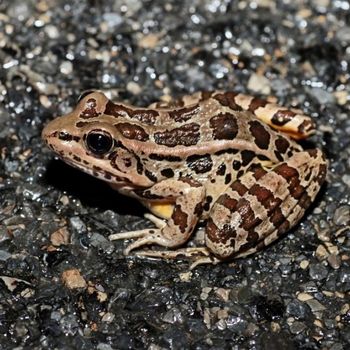 |
| 24 | Dusky Gopher Frog (Rana sevosa) |
| 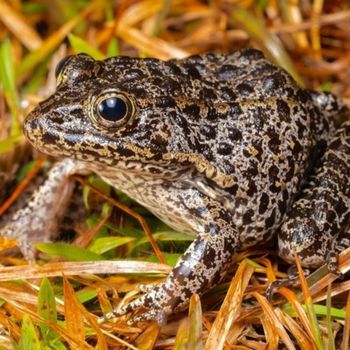 |
| 25 | Greenhouse Frog (Eleutherodactylus planirostris) |
| 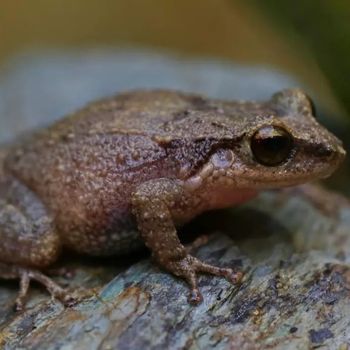 |
| 26 | American Toad (Anaxyrus americanus) |
|  |
| 27 | Oak Toad (Anaxyrus quercicus) |
| 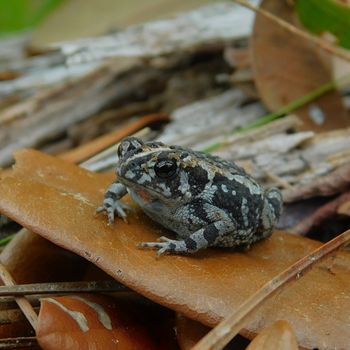 |
| 28 | Southern Toad (Anaxyrus terrestris) |
| 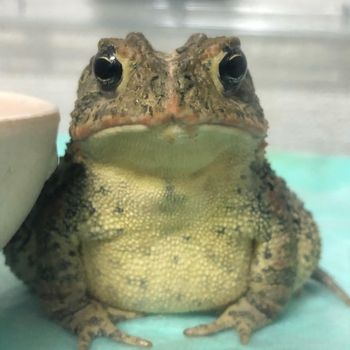 |
| 29 | Fowler’s Toad (Anaxyrus fowleri) |
| 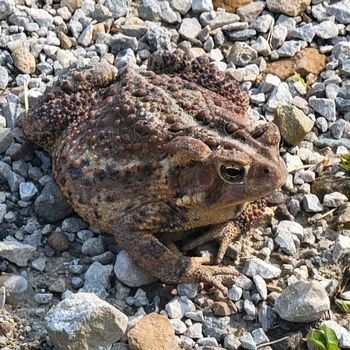 |
| 30 | Gulf Coast Toad (Incilius nebulifer) |
| 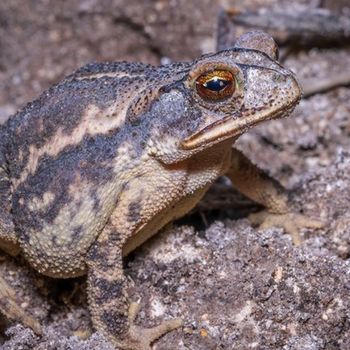 |
| 31 | Eastern Narrow-mouthed Toad (Gastrophryne carolinensis) |
| 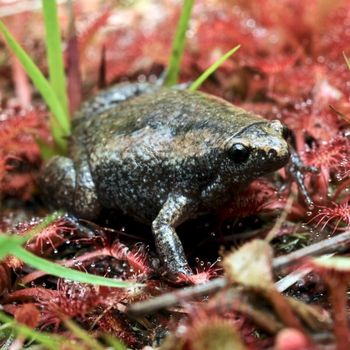 |
| 32 | Eastern Spadefoot Toad (Scaphiopus holbrookii) |
| 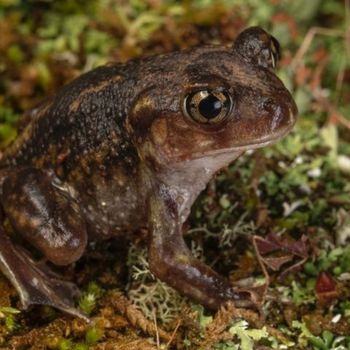 |
32 Frog Species You Can Find in Mississippi
Get ready to dive deep into the lives of 32 incredible frog species that call Mississippi their home, showcasing their unique adaptations and remarkable behaviors.
1. Northern Cricket Frog
- Scientific Name: Acris crepitans
- Common Name: Northern cricket frog
- Size: 0.6-1.5 inches (1.5-3.8 cm)
- Color & Pattern: Brown or green with dark spots or bands
- Natural Habitat: Shallow, permanent waters with vegetation
- Geographic Range: Eastern united states (minnesota to texas)
- Diet: Insects, spiders, small invertebrates
- Reproduction: Breeds in shallow waters, eggs attached to plants
- Vocalization: Distict chirping or clicking calls made by males during breeding season
- Adaptation: Powerful legs for jumping, freeze tolerance
- Conservation Status: Least concern
These tiny amphibians, ranging from 0.6 to 1.5 inches in length, display charming brown or green hues adorned with dark spots or bands. Hailing from the eastern United States, these little acrobats can be found amid shallow, permanent waters where vegetation thrives.
These remarkable frogs boast powerful legs, enabling them to leap up to six feet in a single jump! Northern Cricket Frogs primarily feast on insects, spiders, and small invertebrates. During breeding season, the males serenade their mates with distinct chirping or clicking calls, laying their eggs in shallow waters attached to various plants.
With a conservation status of Least Concern, the Northern Cricket Frog is a thriving species. One of their most fascinating traits is their incredible freeze tolerance, making them well-adapted to their environment. With such unique features, the Northern Cricket Frog is undoubtedly one of nature’s captivating wonders.
2. Southern Cricket Frog
- Scientific Name: Acris gryllus
- Common Name: Southern cricket frog
- Size: 0.6-1.4 inches (1.5-3.5 cm)
- Color & Pattern: Varied brown, gray, green, or reddish with darker spots or stripes
- Natural Habitat: Shallow freshwater habitats, streams, ponds, wetlands
- Geographic Range: Southeastern united states
- Diet: Small insects, spiders, and aquatic invertebrates
- Reproduction: Breeds in shallow water, lays eggs singly or in small clusters
- Vocalization: Short, metallic, cricket-like chirping call by males during breeding
- Adaptation: Strong hind limbs for fast hopping and swimming
- Conservation Status: Least concern
Flaunting a diverse wardrobe, these frogs can be found in shades of brown, gray, green, or reddish hues, often adorned with intricate dark spots or stripes. Remarkably, these little creatures possess the incredible ability to change their color slowly over time, ensuring they blend seamlessly with their surroundings.
Inhabiting the shallow freshwater habitats, streams, ponds, and wetlands of the southeastern United States, the Southern Cricket Frog thrives in the rich ecosystem it calls home. Their palate consists of small insects, spiders, and aquatic invertebrates – perfect fuel for their active lifestyle. When it comes to reproduction, these frogs don’t delay, laying their eggs either singly or in small clusters amidst the shallow waters they so love.
Equipped with strong hind limbs, these agile acrobats excel in both fast hopping and swimming, and are known to serenade their surroundings with short, metallic, cricket-like chirps during breeding season. Currently, the Southern Cricket Frog holds a “least concern” conservation status, but their fascinating adaptations and unique characteristics make them an essential and captivating member of their environment.
3. Blanchard’s Cricket Frog
- Scientific Name: Acris blanchardi
- Common Name: Blanchard’s cricket frog
- Size: 0.6-1.5 inches (1.5-3.8 cm)
- Color & Pattern: Varied green, gray, or brown with darker markings or spots
- Natural Habitat: Shallow wetlands, lakes, and streams with grassy or muddy edges
- Geographic Range: Southeast canada and eastern united states
- Diet: Aquatic insects, spiders, and small invertebrates
- Reproduction: Breeds in shallow water bodies, females lay eggs individually or in small clumps
- Vocalization: Sharp, high-pitched peeping calls by males during breeding
- Adaptation: Powerful hind legs for long jumps, small size for hiding and escaping predators
- Conservation Status: Least concern
Introducing Acris blanchardi, the diminutive amphibian more commonly known as Blanchard’s Cricket Frog, who dazzles with a varied array of green, gray, or brown tones adorned with darker markings or spots. These energetic frogs are experts in camouflage, measuring only 0.6-1.5 inches (1.5-3.8 cm) in length, and use their powerful hind legs to leap up to 3 feet (1 meter) in a single bound!
Preferring the serene shallow wetlands, lakes, and streams with grassy or muddy edges of southeast Canada and the eastern United States, Blanchard’s Cricket Frogs find the perfect estuaries to feast on their diet of aquatic insects, spiders, and other small invertebrates. These agile performers serenade their mates with sharp, high-pitched peeping calls, after which the female lays her eggs individually or in small clumps in the shallows.
Despite being tiny, it’s hard not to take notice of Blanchard’s Cricket Frogs due to their prodigious egg-laying skills, producing spawn almost continuously through the breeding season under the conservation status of “Least Concern”. The blend of their unique adaptations, spectacular colorations, and energetic leaps leave no doubt that Blanchard’s Cricket Frogs are truly one-of-a-kind.
4. Collinses’ Mountain Chorus Frog
- Scientific Name: Pseudacris collinsorum
- Common Name: Collinses’ mountain chorus frog
- Size: 1-1.5 inches (2.5-3.8 cm)
- Color & Pattern: Varied brown or gray with darker stripes and triangular or mottled markings
- Natural Habitat: Forests, meadows, wetlands, grasslands
- Geographic Range: Appalachian mountain region (usa)
- Diet: Insects, spiders, and small invertebrates
- Reproduction: Breeds in shallow pools or wetlands, lays eggs attached to vegetation
- Vocalization: Two short, trill-like notes often followed by a series of clicks
- Adaptation: Ability to withstand and adapt to cold mountain environments, freeze tolerance
- Conservation Status: Data deficient
Adorned in a beautiful camouflage of varied brown or gray hues, their bodies feature captivating darker stripes and peculiar triangular or mottled markings. They charmingly serenade their surroundings with a series of distinctive vocalizations—two short, trill-like notes often followed by clicks.
In the wild, the Collinses’ Mountain Chorus Frog makes its home across the Appalachian Mountain region, thriving in a diverse range of habitats from lush forests and meadows to grasslands and wetlands. These frogs possess antifreeze proteins in their bodies, granting them the un-frog-ettable ability to withstand freezing temperatures in cold mountain environments with freeze tolerance. Their diet consists of insects, spiders, and other small invertebrates.
Reproduction for this elusive frog species involves breeding in shallow pools or wetlands and laying eggs that attach to surrounding vegetation. Despite their rarely-seen nature, their conservation status remains “data deficient,” leaving their populations and possible threats uncertain. With their intriguing adaptations and unique presence, the Collinses’ Mountain Chorus Frog is an intriguing addition to the amphibian world.
5. Southern Chorus Frog
- Scientific Name: Pseudacris nigrita
- Common Name: Southern chorus frog
- Size: 0.75-1.5 inches (1.9-3.8 cm)
- Color & Pattern: Gray or brown with dark, irregular stripes or spots
- Natural Habitat: Wetlands, swamps, ephemeral ponds
- Geographic Range: Southeastern united states, florida to eastern texas
- Diet: Insects, spiders, and small invertebrates
- Reproduction: Breeds in shallow, temporary water bodies, lays eggs in clusters on water surface
- Vocalization: High-pitched, ascending trill by males during breeding
- Adaptation: Nocturnal, freeze tolerance, can survive brief periods of subfreezing temperatures
- Conservation Status: Least concern
As a southern belle, it frequents wetlands, swamps, and ephemeral ponds, making its home throughout the southeastern United States, from Florida to eastern Texas.
This bustling critter has an affinity for insects, spiders, and small invertebrates, making it a crucial player in maintaining insect populations. Its distinctive nocturnal serenade is a high-pitched, ascending trill performed by males during breeding season. With a knack for romance, the Southern Chorus Frog prefers to breed in shallow, temporary water bodies and lay its eggs in clusters on the water’s surface.
While often mistaken for other species, this clever amphibian is well-equipped to handle the challenges of its habitat in Mississippi. It has evolved not only to be active at night but also to possess an impressive freeze tolerance, enabling it to survive brief periods of subfreezing temperatures. Fortunately for this charming little frog, it faces no immediate threats to its existence and enjoys a conservation status of “Least Concern.”
6. Upland Chorus Frog
- Scientific Name: Pseudacris feriarum
- Common Name: Upland chorus frog
- Size: 0.9-1.4 inches (2.3-3.5 cm)
- Color & Pattern: Green or brown with darker stripes or spots
- Natural Habitat: Woodlands, swamps, grasslands, marshes
- Geographic Range: Eastern united states (mississippi river valley to atlantic coast)
- Diet: Insects, spiders, small invertebrates
- Reproduction: Breeds in shallow freshwater habitats, lays eggs attached to vegetation
- Vocalization: Short, ascending trill by males during breeding
- Adaptation: Freeze-tolerant, can survive in temporary water bodies
- Conservation Status: Least concern
Measuring only 0.9-1.4 inches, these vibrant little creatures boast an array of green or brown hues adorned with darker stripes or spots, perfect for blending into their diverse habitats that range from woodlands to marshes across the Eastern United States.
These energetic jumpers have an appetite for insects, spiders, and other small invertebrates. When it comes to love, the Upland Chorus Frog exhibits true romanticism, as the males sing a short, ascending trill during breeding time in shallow freshwater habitats. Here, they lay their eggs attached to floating vegetation, creating a cozy cradle for their offspring.
Never backing down from a challenge, this frog’s adaptations are nothing short of remarkable. Their freeze-tolerant nature enables them to survive temporary water bodies, and they even have the intriguing ability to hybridize with other chorus frog species. With a conservation status of “Least Concern,” the Upland Chorus Frog remains a thriving and captivating member of the amphibian world.
7. Ornate Chorus Frog
- Scientific Name: Microhyla fissipes
- Common Name: Ornate chorus frog
- Size: 1-1.6 inches (2.5-4 cm)
- Color & Pattern: Brown or gray with black markings, green-yellow or white-yellow spots
- Natural Habitat: Rice fields, forests, grasslands, swamps, ponds
- Geographic Range: Southeast asia
- Diet: Insects, small invertebrates
- Reproduction: Breeds in shallow, temporary pools; lays eggs in foam nests on the water surface
- Vocalization: High-pitched, rapid trill calls by males during breeding
- Adaptation: Can change color rapidly to blend in with surroundings
- Conservation Status: Not evaluated, but likely least concern
This small, vibrant amphibian is typically 1-1.6 inches in size, displaying a captivating color palette of brown or gray with black markings and striking green-yellow or white-yellow spots. These creative creatures have the fascinating ability to change color rapidly, helping them blend in seamlessly with their surroundings.
Often found hopscotching between rice fields, forests, grasslands, swamps, and ponds, the Ornate Chorus Frog is native to Southeast Asia. Their staple diet consists of insects and various small invertebrates. Interestingly, these adaptive amphibians can tolerate anthropogenic habitats, including rice fields, thanks to their highly adaptable nature.
Males of the species boast impressive high-pitched, rapid trill calls during breeding season, serenading onlookers as they produce foam nests on the water’s surface in shallow, temporary pools. Although the conservation status of these wondrous creatures is not yet evaluated, experts enigmatically posit they could fall under the classification of “Least Concern.”
8. Spring Peeper
- Scientific Name: Pseudacris crucifer
- Common Name: Spring peeper
- Size: 0.75-1.5 inches (1.9-3.8 cm)
- Color & Pattern: Brown or green with an x-shaped mark on the back
- Natural Habitat: Woodlands, swamps, marshes
- Geographic Range: Eastern north america (canada to the southeastern united states)
- Diet: Insects, spiders, small invertebrates
- Reproduction: Breeds in freshwater habitats, lays eggs attached to vegetation
- Vocalization: High-pitched peeping call by males during breeding
- Adaptation: Freeze tolerance, nocturnal, adhesive toe pads for climbing
- Conservation Status: Least concern
Their intriguing brown or green skin is adorned with an X-shaped mark on their back, making them a small, nocturnal, woodland wonder. Inhabitants of woodlands, swamps, and marshes, these captivating creatures can be found all over Eastern North America, from Canada down to the southeastern United States.
Feasting on a diet of insects, spiders, and small invertebrates, these little frogs expertly navigate their environment using their adaptive toe pads for climbing. With harmonious high-pitched peeps, male Spring Peepers beckon their mates dutifully during the breeding season. Upon finding the perfect freshwater haven, these frogs lay their eggs attached to vegetation, continuing the cycle of life.
A true testament to nature’s resilience, Spring Peepers boast incredible freeze tolerance that allows them to survive temperatures up to -8°C (18°F). Although their conservation status remains listed as “Least Concern,” their enchanting presence serves as a reminder of nature’s awe-inspiring, adaptable beauty.
9. Cajun Chorus Frog
- Scientific Name: Pseudacris fouquettei
- Common Name: Cajun chorus frog
- Size: 0.75-1.5 inches (1.9-3.8 cm)
- Color & Pattern: Grayish-brown or green with three dark stripes or blotches
- Natural Habitat: Marshes, wetlands, ponds, ditch banks
- Geographic Range: Southeastern united states (louisiana, texas, arkansas)
- Diet: Small insects, spiders, other invertebrates
- Reproduction: Breeds in shallow aquatic habitats, lays eggs in small clusters
- Vocalization: Distinctive trill or chirping call by males during breeding
- Adaptation: Fast and agile; adapted for climbing vegetation, small size
- Conservation Status: Least concern
Introducing the Cajun Chorus Frog, scientifically known as Pseudacris fouquettei – a petite and elusive amphibian that thrives in the southeastern United States, specifically Louisiana, Texas, and Arkansas. Measuring only 0.75-1.5 inches, these tiny creatures showcase a captivating grayish-brown or green color with three dark stripes or blotches that add an air of mystery to their appearance.
Adventurous by nature, the Cajun Chorus Frog inhabits marshes, wetlands, ponds, and ditch banks of Mississippi, where it dines on small insects, spiders, and other invertebrates. Expert at climbing vegetation, this predominantly diurnal frog reveals its nocturnal side during the breeding season as it gathers in shallow aquatic habitats to lay eggs in small clusters, serenading the area with the males’ distinctive trill or chirping call.
Despite their secretive nature, this fast and agile species enjoys the conservation status of ‘Least Concern.’ Highly adaptable, the Cajun Chorus Frog has become a fascinating marvel for nature lovers who appreciate the amphibian’s ability to expertly blend into its surroundings and showcase its versatile nocturnal and diurnal behaviors.
10. Bird-Voiced Frog
- Scientific Name: Hyla avivoca
- Common Name: Bird-voiced treefrog
- Size: 1-2 inches (2.5-5 cm)
- Color & Pattern: Greenish gray with a white lipstripe and dark markings on the legs
- Natural Habitat: Wooded swampland, cypress swamps
- Geographic Range: Southeastern united states
- Diet: Insects, spiders, small invertebrates
- Reproduction: Breeds in shallow freshwater habitats, lays eggs in water
- Vocalization: High-pitched bird-like call by males during breeding
- Adaptation: Arboreal nature helps them escape predators
- Conservation Status: Least concern
Meet the Bird-Voiced Treefrog, scientifically known as Hyla avivoca – a captivating little creature that adorns the southeastern woodlands of the United States. Sporting a greenish-gray coat featuring a distinctive white lip stripe and intriguing dark markings on its legs, this charming amphibian measures a modest yet delightful 1-2 inches long.
Hidden among the cypress swamps and wooded swamplands, the Bird-Voiced Treefrog thrives in the arboreal heights – a clever adaptation to escape from the clutches of predators. As the night envelops the world, these nocturnal frogs emerge to feast on insects, spiders, and other small invertebrates, contributing to the balance and harmony within their ecosystems.
What truly sets these enchanting frogs apart from others is their unique, high-pitched bird-like vocalizations, sung proudly by males during the breeding season. It is in shallow freshwater habitats where they lay their eggs and continue their life cycles. Despite the numerous marvels surrounding this species, its conservation status remains one of “Least Concern” – allowing us to enjoy their magnificent presence for generations to come.
11. Pine Woods Tree Frog
- Scientific Name: Dryophytes femoralis
- Common Name: Pine woods tree frog
- Size: 1.1-1.9 inches (2.8-4.8 cm)
- Color & Pattern: Green to brown with dark-edged light dorsolateral stripes, light marking between the eyes
- Natural Habitat: Pine forests, wooded areas, near water sources
- Geographic Range: Southeastern united states
- Diet: Insects, spiders, small invertebrates
- Reproduction: Breeds in temporary pools, lays eggs attached to vegetation
- Vocalization: Soft, staccato calls or ticking sounds by males during breeding
- Adaptation: Good climbers, camouflage coloration, nocturnal
- Conservation Status: Least concern
Hidden among the pine forests of the southeastern United States, the enchanting Pine Woods Tree Frog (Dryophytes femoralis) playfully leaps and climbs near water sources. A tiny gem in the forest, these remarkable creatures range in size from merely 1.1 to 1.9 inches, seamlessly blending in as their green to brown skin exhibits dark-edged light dorsolateral stripes and an ethereal light marking between the eyes.
Nocturnal by nature, these skilled climbers thrive under the cover of darkness, emerging to feast on insects, spiders, and small invertebrates that inhabit Mississippi. Their excellent jumping abilities and camouflage coloration make them a formidable predator, despite their diminutive stature. When it’s time to expand their family, these frogs retreat to temporary pools, laying their eggs on vegetation as the males serenade their partners with soft, staccato calls or ticking sounds.
Fortunately for these captivating amphibians, their conservation status remains of least concern, indicating a healthy and stable population. Surely, the pine woods continue to echo with the whispers of the males’ dark vocal sacs as they expertly navigate the wooded environment, leaving us in wonder at their marvelous existence.
12. Squirrel Tree Frog
- Scientific Name: Hyla squirella
- Common Name: Squirrel tree frog
- Size: 1-1.5 inches (2.5-3.8 cm)
- Color & Pattern: Green, yellow, or brown with varying dark spots
- Natural Habitat: Forests, swamps, suburban areas
- Geographic Range: Southeastern united states
- Diet: Small insects, spiders, ants
- Reproduction: Breeds in temporary pools, lays eggs in clusters
- Vocalization: Soft nasal quacks by males during breeding
- Adaptation: Camouflage with the ability to change color, nocturnal
- Conservation Status: Least concern
Measuring just 1-1.5 inches long, these nimble creatures come in hues of green, yellow, or brown, often adorned with dark spots that provide perfect camouflage amidst their forest, swamp, and suburban dwellings.
Nocturnal by nature, these skilled predators feast on small insects, spiders, and ants, contributing to insect control in their habitats. Their amorous mating rituals are characterized by males’ soft nasal quacks, as they lay clusters of eggs in temporary pools to ensure the next generation.
Equipped with impressive adaptations, the Squirrel Tree Frog can survive mild freezing temperatures, and cunningly change color for optimal concealment. Despite their resourcefulness, their conservation status is still one of least concern, allowing us to appreciate these fascinating creatures for years to come.
13. Barking Tree Frog
- Scientific Name: Hyla gratiosa
- Common Name: Barking tree frog
- Size: 2-2.7 inches (5-7 cm)
- Color & Pattern: Green with darker irregular spots or blotches
- Natural Habitat: Forests, swamps, wetlands
- Geographic Range: Southeastern united states (from virginia to florida and west to texas)
- Diet: Insects, spiders, small invertebrates
- Reproduction: Breeds in temporary ponds or wetlands, lays eggs on submerged vegetation
- Vocalization: Loud, deep, barking call by males during breeding
- Adaptation: Sticky pads on toes for climbing, change color for camouflage
- Conservation Status: Least concern
Meet the Hyla gratiosa, commonly known as the Barking Tree Frog. You can’t miss its dazzling green hue, adorned with darker irregular spots, giving it an almost mesmerizing appearance. This petite amphibian ranges from 2 to 2.7 inches (5-7 cm), making its home in forests, swamps, and wetlands across the southeastern United States, from Virginia to Florida and west to Texas.
The Barking Tree Frog enjoys feasting on insects, spiders, and small invertebrates. This species is known to have an almost dog-like barking call, as males emit a loud, deep sound during breeding season. As they breed in temporary ponds or wetlands, the females lay eggs on submerged vegetation, creating a temporary haven for their offspring as they begin their life journey.
Not only a fascinating vocal showstopper, the Barking Tree Frog also boasts unique adaptations that set it apart. With sticky pads on their toes, they’re able to scamper up trees with unparalleled ease. Plus, they possess the special ability to change color for camouflage, ensuring maximum survival in their ephemeral pond habitats. Fortunately, these captivating creatures are currently classified as being of least concern when it comes to conservation status.
14. Green Tree Frog
- Scientific Name: Litoria caerulea
- Common Name: Green tree frog
- Size: 3-4.5 inches (7.6-11.4 cm)
- Color & Pattern: Green with small white or yellow spots
- Natural Habitat: Rainforests, woodlands, swamps, marshes, gardens
- Geographic Range: Northern and eastern australia, new guinea, indonesia
- Diet: Insects, spiders, small invertebrates
- Reproduction: Breeds in freshwater habitats, lays eggs on leaves or in water
- Vocalization: Quacking or barking calls by males during breeding
- Adaptation: Sticky toe pads for climbing, nocturnal, good swimmers
- Conservation Status: Least concern
The magnificent Green Tree Frog (Litoria caerulea) is an eye-catching amphibian found primarily in the dense rainforests, woodlands, and lush gardens of northern and eastern Australia, as well as the tropical lands of New Guinea and Indonesia. Their vivid color and interesting pattern, with green dominating the skin and small yellow or white spots, allows them to become one with their surroundings, often hidden in plain sight.
Measuring between 3 to 4.5 inches, these nocturnal creatures are nimble and adept climbers, thanks to their sticky toe pads. Hunting insects, spiders, and small invertebrates at night, their dexterity is not limited to land. They are also skilled swimmers, navigating through swamps and marshes of Mississippi with ease. Males serenade potential mates with quacks or barks, laying the stage for breeding in freshwater habitats with eggs laid delicately on leaves or in the water.
Despite being listed as “least concern” in conservation status, Green Tree Frogs are known for their fascinating ability to change color, making them popular among humans. They are often found living alongside people, taking refuge in homes or gardens. Their resilience, adaptability, and intriguing charm earn them a special place in the hearts of those who encounter them.
15. Cope’s Gray Tree Frog
- Scientific Name: Hyla chrysoscelis
- Common Name: Cope’s gray tree frog
- Size: 1.0-2.0 inches (2.5-5.1 cm)
- Color & Pattern: Gray, green or brown with darker spots or patches, white underside
- Natural Habitat: Forests, swamps, wooded areas
- Geographic Range: Eastern united states and southeastern canada
- Diet: Insects, spiders, small invertebrates
- Reproduction: Breeds in freshwater habitats, lays eggs on water surface
- Vocalization: Short, rapid trills by males during breeding season
- Adaptation: Ability to change color, cling to surfaces, freeze-tolerance
- Conservation Status: Least concern
Perched high among the trees in the eastern United States and southeastern Canada, the enchanting Cope’s Gray Tree Frog thrives (Hyla chrysoscelis). With a petite frame of 1.0-2.0 inches (2.5-5.1cm), this shy creature can blend seamlessly into its surroundings, changing colors from gray, green, or brown with darker accents, while sporting a pristine white underside.
Feasting on insects, spiders, and other small invertebrates, the Cope’s Gray Tree Frog builds its life amid dense forests, swamps, and other wooded areas. As for reproduction, they embrace their love affair with water, breeding in freshwater habitats and laying their eggs on the surfaces of various bodies of water. This delicate creature takes part in a melodious symphony, with males contributing short, rapid trills during the breeding season.
Possessing an array of astounding adaptations, these frogs residing in Mississippi can not only change color, but also cling to surfaces with ease and display an exceptional freeze-tolerance. In fact, they are known to survive even when partially frozen. With a conservation status of “least concern,” the enigmatic Cope’s Gray Tree Frog perseveres, occasionally venturing to the ground, but more often gracing the treetops with its whimsical charm.
16. Southern Leopard Frog
- Scientific Name: Lithobates sphenocephalus
- Common Name: Southern leopard frog
- Size: 2-3.5 inches (5-9 cm)
- Color & Pattern: Green or brown with dark, round spots and light borders
- Natural Habitat: Marshes, swamps, rivers, agricultural areas
- Geographic Range: Southeastern united states
- Diet: Insects, spiders, small crustaceans, other invertebrates
- Reproduction: Breeds in shallow freshwater habitats, lays eggs in masses
- Vocalization: Low-pitched chuckle or snore-like call by males during breeding
- Adaptation: Powerful legs for jumping, ability to tolerate colder temperatures
- Conservation Status: Least concern
This charming creature displays a captivating green or brown complexion adorned with dark, round spots and light borders. At a petite size of 2-3.5 inches (5-9 cm), they make their homes in marshes, swamps, rivers, and even agricultural areas throughout the southeastern United States.
These curious amphibians have a hearty appetite, indulging in insects, spiders, small crustaceans, and other invertebrates. To expand their family, they breed in shallow freshwater habitats, laying their eggs in mesmerizing masses. You may even hear their low-pitched chuckle or snore-like call emanating from the males as they partake in their breeding rituals.
The Southern Leopard Frog is an agile and adaptable species, boasting powerful legs for jumping and the ability to tolerate colder temperatures. Amazingly, they can even breathe through their skin while hibernating underwater. Currently, these splendid creatures have a conservation status of least concern, but let’s not forget their unique features and crucial role within their ecosystems.
17. Crawfish Frog
- Scientific Name: Lithobates areolatus
- Common Name: Crawfish frog
- Size: 2.5-3.5 inches (6-9 cm)
- Color & Pattern: Predominantly gray with light reticulated pattern, black-bordered dark spots
- Natural Habitat: Prairie wetlands, burrows of crayfish
- Geographic Range: Southeastern united states
- Diet: Insects, spiders, crayfish
- Reproduction: Breeds in temporary pools, lays up to 7,000 eggs in clusters
- Vocalization: Deep, snore-like call by males during breeding season
- Adaptation: Uses crayfish burrows for shelter and protection, adapts to aquatic and terrestrial environments
- Conservation Status: Least concern
Sporting a predominantly gray, light reticulated pattern and black-bordered dark spots, this elusive creature primarily inhabits prairie wetlands across the southeastern United States.
Feasting on insects, spiders, and even crayfish, these frogs find unique shelter and protection within the burrows of their crustacean namesakes. During breeding season, they lay impressive clusters of up to 7,000 eggs in temporary pools, with the males serenading their counterparts with deep, snore-like vocalizations.
Although Crawfish Frogs are listed as being of “Least Concern” regarding conservation status, they are seldom encountered due to their secretive habits. They possess the ability to secrete toxins as a methodical predator deterrent, making them not just clever but adaptable to both aquatic and terrestrial environments.
18. Gopher Frog
- Scientific Name: Lithobates capito
- Common Name: Gopher frog
- Size: 2-3.5 inches (5-9 cm)
- Color & Pattern: Gray to brown with dark spots or blotches
- Natural Habitat: Longleaf pine forests, grassy habitats
- Geographic Range: Southeastern united states
- Diet: Insects, spiders, small invertebrates
- Reproduction: Breeds in temporary wetlands, lays eggs in clusters
- Vocalization: Males emit snore-like calls during breeding season
- Adaptation: Burrowing behavior, specialized skin cells for water conservation
- Conservation Status: Vulnerable
Introducing the enchanting Gopher Frog, an amphibian with a scientific name of Lithobates capito, that resides in the southeastern United States. Spanning a modest 2-3.5 inches in size, these petite creatures boast an earthy color ranging from gray to brown, adorned with mesmerizing dark spots or blotches, making them a sight to behold in their preferred longleaf pine forests and grassy habitats.
Gopher Frogs showcase a fascinating lifestyle, indulging in a diet of insects, spiders, and small invertebrates while employing their unique burrowing behavior. Surprisingly, these frogs are quite resourceful, often utilizing abandoned gopher tortoise burrows. When it comes to breeding, they seek refuge in temporary wetlands where the females lay clusters of eggs as the males captivate us with their snore-like calls throughout the season.
These intriguing creatures are undeniably resilient, equipped with specialized skin cells perfect for water conservation. Despite their intriguing adaptations, the Gopher Frog’s conservation status remains vulnerable. Let us appreciate these endearing frogs, so named for their remarkable burrowing behavior, and become captivated by their distinctive presence in our world.
19. American Bullfrog
- Scientific Name: Lithobates catesbeianus
- Common Name: American bullfrog
- Size: 3.5-6 inches (9-15 cm)
- Color & Pattern: Green to brown with dark spots and patterns
- Natural Habitat: Ponds, lakes, marshes, slow-moving streams
- Geographic Range: Eastern and central united states, canada, mexico, introduced worldwide
- Diet: Fish, crustaceans, insects, small mammals, birds, other amphibians
- Reproduction: Breeds in aquatic habitats, lays eggs in flat surfaces on water
- Vocalization: Deep, low-pitched calls by males during breeding
- Adaptation: Highly adaptable, strong legs for jumping and swimming
- Conservation Status: Least concern
Immerse yourself in the world of the American Bullfrog (Lithobates catesbeianus), a striking amphibian with a size ranging from 3.5 to 6 inches (9-15 cm). Adorned in a rich palette of green to brown, they exhibit dark spots and patterns which serve as excellent camouflage within their habitat. These aquatic creatures can leap and swim with grace and strength, due to their powerful legs.
Dwelling in the eastern and central United States, Canada, Mexico, and various regions around the world, they call ponds, lakes, marshes, and slow-moving streams their home. They satiate their hunger with a diverse diet of fish, crustaceans, insects, small mammals, birds, and other amphibians. The American Bullfrog is even known to be cannibalistic, predating on native species in introduced areas.
During breeding season, male Bullfrogs exclaim deep, low-pitched calls to attract mates, resulting in them laying their eggs in flat surfaces on the water for successful reproduction. Despite being a significant predator, their conservation status remains of least concern and they continue to thrive, showcasing their impressive adaptability. Delve deeper into the world of this fascinating amphibian, and uncover more about its unique quirks and captivating existence.
20. Green Frog
- Scientific Name: Lithobates clamitans
- Common Name: Green frog
- Size: 2.3-3.5 inches (5.8-8.9 cm)
- Color & Pattern: Dark green or olive green with small dark spots
- Natural Habitat: Ponds, marshes, lakeshores, slow-moving streams
- Geographic Range: Eastern united states and canada
- Diet: Aquatic insects, snails, crustaceans, small fishes
- Reproduction: Breeds in shallow freshwater habitats, lays eggs in clusters
- Vocalization: Deep, bass-like calls by males during breeding
- Adaptation: Highly aquatic, powerful hind legs for jumping and swimming
- Conservation Status: Least concern
Behold the vibrant Lithobates clamitans, better known to us earthlings as the Green Frog! Its striking, dark green or olive green hue, accented by tiny spots, easily captivates the eye – a stunning inhabitant of the ponds, marshes, lakeshores, and slow-moving streams across Eastern United States and Canada. This exquisite amphibian masters the art of camouflage with a size ranging from 2.3 to 3.5 inches (5.8-8.9cm).
As a natural-born gourmet, the Green Frog feasts on a delectable menu of aquatic insects, snails, crustaceans, and small fishes. Cunning and creative, it seeks out shallow freshwater habitats for breeding, laying clusters of eggs as a part of its ingenious reproduction cycle. And, oh, how they serenade! The males’ deep bass-like calls enchant during the breeding season, as their bright yellow vocal sacs visually delight.
Frogs that are designed to jump and swim with their powerful hind legs, these phenomenal creatures are highly aquatic by nature. Perhaps the most fascinating facts linger in their ability to magically regenerate lost limbs, forming an extraordinary evolutionary edge. Fear not for their future, as they are classified with a conservation status of “Least Concern.” Our enchanting Green Frog will continue to leap and swim, astonishing us for years to come.
21. Pig Frog
- Scientific Name: Lithobates grylio
- Common Name: Pig frog
- Size: 3.5-6.5 inches (8.9-16.5 cm)
- Color & Pattern: Green or grayish-brown with irregular, darker markings
- Natural Habitat: Freshwater habitats such as swamps, marshes, and ponds
- Geographic Range: Southeastern united states
- Diet: Aquatic insects, crustaceans, small fish, other amphibians
- Reproduction: Breeds in shallow wetlands, lays eggs in loose masses in water
- Vocalization: Deep, grunting calls, resembling pig grunts
- Adaptation: Strong hind legs for swimming and jumping, nocturnal behavior, mucus secretions on skin to reduce water loss
- Conservation Status: Least concern
This fascinating creature can grow between 3.5-6.5 inches, boasting a vibrant green or grayish-brown skin with captivating irregular darker markings. They make their home in the breathtaking freshwater habitats in the southeastern United States, including swamps, marshes, and ponds.
A true survivor, the Pig Frog’s diet includes aquatic insects, crustaceans, small fish, and even other amphibians. Breeders extraordinaire, they lay their eggs in shallow wetlands, with females capable of laying an astonishing 10,000 eggs. Incredibly, when food is scarce, their tadpoles adopt cannibalistic behaviors.
Masters of adaptation, the Pig Frog is gifted with powerful hind legs to swim and jump with ease, nocturnal traits, and vital mucus secretions on their skin to reduce water loss. Known for their distinct deep, grunting calls, resembling pig grunts, the Pig Frog is always having a party. Currently, they are listed as “Least Concern” in conservation status, thankfully here for the world to enjoy.
22. River Frog
- Scientific Name: Amietia angolensis
- Common Name: River frog
- Size: 2-3.5 inches (5-9 cm)
- Color & Pattern: Green to brown, sometimes with dark spots or marbling
- Natural Habitat: Rivers, streams, swamps, and wetlands
- Geographic Range: Sub-saharan africa
- Diet: Insects, spiders, and other small invertebrates
- Reproduction: Breeds in water, females lay eggs on submerged vegetation
- Vocalization: Males produce soft clicking calls
- Adaptation: Webbed feet for efficient swimming, good jumpers
- Conservation Status: Least concern
Discover the enchanting world of the Amietia angolensis, or more commonly known as the River Frog. With their vibrant hues ranging from green to brown, and adorned with intriguing dark spots or marbling, these fascinating creatures measure roughly between 2-3.5 inches in length. Renowned for their silky soft clicking calls, the River Frog can easily captivate the hearts of those who encounter them.
Expert jumpers and agile swimmers, these marvelous frogs thrive in the rivers, streams, swamps, and wetlands of Sub-Saharan Africa. Their powerful webbed feet are perfectly tailored to make these small amphibians efficient in their natural habitats. As nocturnal hunters, the River Frog feasts on a diet consisting of insects, spiders, and other small invertebrates, fueling their energetic lifestyle.
With an astonishing ability to regrow lost body parts and gliding membranes between their toes, the River Frog is filled with mysteries that continue to amaze biologists and nature enthusiasts alike. Although their conservation status is of least concern, it is vital to ensure that these remarkable creatures can continue to thrive, breed in water, and lay their eggs on submerged vegetation for generations to come.
23. Pickerel Frog
- Scientific Name: Lithobates palustris
- Common Name: Pickerel frog
- Size: 1.5-3 inches (3.8-7.6 cm)
- Color & Pattern: Greenish-brown with parallel rows of dark square spots
- Natural Habitat: Woodlands, marshes, grassy wetlands, near streams and ponds
- Geographic Range: Eastern north america (canada to eastern u.s.)
- Diet: Various insects, spiders, and small invertebrates
- Reproduction: Breeds in freshwater habitats, lays egg masses on vegetation
- Vocalization: Low-pitched snore-like calls by males during breeding
- Adaptation: Produces skin secretions toxic to some predators, strong jumper
- Conservation Status: Least concern
Introducing the captivating Lithobates palustris, commonly known as the Pickerel Frog, a charming amphibian adorned with greenish-brown hues and striking parallel rows of dark square spots. Measuring 1.5-3 inches in size, this agile wonder thrives in the woodlands, marshes, and grassy wetlands of eastern North America, from Canada to the Eastern U.S., often found near streams and ponds.
An omnivorous creature, the Pickerel Frog dines on an array of insects, spiders, and small invertebrates. During reproduction, these remarkable frogs can be heard emitting low-pitched, snore-like calls as they breed in freshwater habitats and delicately lay their egg masses on surrounding vegetation. Boasting incredible adaptations, this frog not only produces skin secretions toxic to some predators, but is also a strong jumper.
Though currently of least concern in terms of their conservation status, the Pickerel Frog boasts a fascinating, and somewhat daunting, fact. Their toxins are harmful to other amphibians, which may lead them to devour smaller frog species. Despite this, the Lithobates palustris remains an intriguing and captivating creature of North America’s wetlands.
24. Dusky Gopher Frog
- Scientific Name: Rana sevosa
- Common Name: Dusky gopher frog
- Size: 1.6-2.6 inches (4.1-6.6 cm)
- Color & Pattern: Dark gray or black with dark spots
- Natural Habitat: Open-canopied pine woodlands
- Geographic Range: Southeastern united states
- Diet: Insects, spiders, and other small invertebrates
- Reproduction: Breeds in temporary ponds, lays eggs in large clusters
- Vocalization: Snores or deep nasal snuffles by males during breeding
- Adaptation: Camouflage coloration, waterproof skin, burrowing behavior
- Conservation Status: Critically endangered
Measuring a mere 1.6-2.6 inches, this charming critter boasts a dark gray or black complexion adorned with mysterious dark spots, making it a master of camouflage in the open-canopied pine woodlands of the Southeastern United States.
A proficient predator, this frog’s dining delights include insects, spiders, and various other delectable invertebrates. Most intriguing, however, is the amphibian’s peculiar mating routine. You can catch glimpses of this unique event in temporary ponds, where they lay eggs in large clusters, accompanied by males’ serenades of gentle snores or deep nasal snuffles.
Tragically, the Dusky Gopher Frog has been classified as critically endangered, its survival threatened by habitat loss and other challenges. With a suite of adaptations, such as waterproof skin and burrowing behavior, these frogs can even breathe through their skin – an awe-inspiring fact. Let us strive to cherish and preserve these fascinating creatures as they surface from the depths just for love!
25. Greenhouse Frog
- Scientific Name: Eleutherodactylus planirostris
- Common Name: Greenhouse frog
- Size: 0.75-1.5 inches (1.9-3.8 cm)
- Color & Pattern: Brown, reddish brown, or gray with dark spots or stripes
- Natural Habitat: Leaf litter, ground debris, human-made structures
- Geographic Range: Native to caribbean, invasive in florida, georgia, and hawaii
- Diet: Small insects, spiders, and other invertebrates
- Reproduction: Direct development, eggs laid in leaf litter and hatch as small froglets
- Vocalization: Soft, cricket-like chirping sounds
- Adaptation: Ability to survive in various environments, nocturnal
- Conservation Status: Least concern
Adorned in shades of brown, reddish-brown, or gray with dark spots or stripes, this little creature will enchant you with its cricket-like chorus of soft, chirping vocalizations.
Thriving in leaf litter, ground debris, and even human-made structures, this native Caribbean species has adventurously expanded its geographical range, inhabiting Florida, Georgia, and Hawaii. Possessing an ability to adapt to various environments and nocturnal by nature, the Greenhouse Frog sustains itself on a diet of small insects, spiders, and other invertebrates.
The fascinating reproduction process of this species involves direct development, laying eggs in leaf litter that remarkably hatch as small froglets. Classified as a species of “least concern” from a conservation perspective, these non-native populations can certainly prove beneficial by helping to control insect populations in their acquired habitats.
26. American Toad
- Scientific Name: Anaxyrus americanus
- Common Name: American toad
- Size: 2-4.5 inches (5-11.4 cm)
- Color & Pattern: Varied brown, gray, or green with darker spots or patches
- Natural Habitat: Forests, fields, suburban areas
- Geographic Range: Eastern north america (canada to mexico)
- Diet: Insects, spiders, snails, small invertebrates
- Reproduction: Breeds in freshwater habitats, lays eggs attached to vegetation
- Vocalization: High-pitched trilling call by males during breeding
- Adaptation: Parotoid glands secrete toxin, can inflate themselves
- Conservation Status: Least concern
The delightful Anaxyrus americanus is commonly known as the American Toad. A medium-sized creature, stretching 2 to 4.5 inches (5-11.4 cm) in length, this charming amphibian sports a varied wardrobe of brown, gray, or green, adorned with darker spots or patches. Adapted to a range of habitats, including forests, fields, and suburban areas, it can be found croaking its way across eastern North America, from Canada to Mexico.
Armed with a voracious appetite, these intriguing l’il toads are the knights of the night, serving as important insect controllers. As nocturnal hunters, their diet consists of insects, spiders, snails, and other small invertebrates. When the time comes to multiply their forces, they breed in freshwater habitats and lay their eggs, spending their days singing a high-pitched, trilling serenade.
Fear not, for these cute-looking critters are packed with an array of impressive adaptations. Equipped with parotoid glands, they ooze a secret toxin when threatened, and can even inflate themselves to defy predators. Currently enjoying a stable environment, the conservation status of the American Toad is of “Least Concern.” Yet, their fascinating nighttime escapades make them an awe-inspiring addition to our ecosystem.
27. Oak Toad
- Scientific Name: Anaxyrus quercicus
- Common Name: Oak toad
- Size: 1-1.5 inches (2.5-3.7 cm)
- Color & Pattern: Gray or black, with a visible ivory or white stripe down the center of the back
- Natural Habitat: Pine forests or sandy, well-drained soils
- Geographic Range: Southeastern united states (virginia to southern texas)
- Diet: Small insects, spiders, and other invertebrates
- Reproduction: Breeds in shallow freshwater pools or ditches, lays eggs in small clusters
- Vocalization: Short, high-pitched peeping call by males during breeding
- Adaptation: Parotoid glands secrete toxin, can burrow into the ground
- Conservation Status: Least concern
The Anaxyrus quercicus, more commonly known as the Oak Toad, is a petite and fascinating amphibian found in the southeastern United States. This little creature measures a mere 1 to 1.5 inches in length and boasts a gray or black coat adorned with a striking ivory or white stripe along its back. Primarily dwelling in pine forests with sandy, well-drained soils, the Oak Toad is notably the smallest toad in North America.
These toads have a diet consisting of small insects, spiders, and other invertebrates, and mainly feed during the daytime. When it comes to reproduction, they prefer laying their eggs in small clusters within the shallow, freshwater pools or ditches that litter their habitat. Male Oak Toads are quite vocal during breeding, producing short, high-pitched peeping calls that surely steal the hearts of their female counterparts.
Among their many unique traits, Oak Toads have parotoid glands that secrete a toxin for protection against predators, and surprisingly, they’re also able to burrow themselves into the ground. The Oak Toad has a conservation status classified as “least concern,” meaning there’s still plenty of opportunities to catch a glimpse of these captivating, minuscule creatures in Mississippi.
28. Southern Toad
- Scientific Name: Anaxyrus terrestris
- Common Name: Southern toad
- Size: 1.5-3 inches (4-7.6 cm)
- Color & Pattern: Brown or reddish-brown with dark spots or warts
- Natural Habitat: Pine forests, oak scrublands, coastal plains
- Geographic Range: Southeastern united states (florida to virginia)
- Diet: Insects, spiders, small invertebrates
- Reproduction: Breeds in temporary ponds, lays eggs in double strings
- Vocalization: Short, nasal breeding call by males
- Adaptation: Parotoid glands secrete bufotoxin, efficient at burrowing
- Conservation Status: Least concern
Measuring a petite 1.5-3 inches, its brown or reddish-brown skin blended with dark spots or warts becomes its unique attire. Residing in the enchanting pine forests and oak scrublands, this magnificent creature roams the coastal plains across the southeastern United States, from Florida to Virginia.
As an adept hunter, the Southern Toad’s diet mainly consists of insects, spiders, and small invertebrates, playing a vital role in controlling insect populations. When it comes to courting, these toads prefer to breed in temporary ponds, laying their eggs in double strings while males enchant females with short, nasal calls.
Remarkably adaptive, Southern Toads possess parotoid glands that secrete bufotoxin, their own magical potion for deterring predators, and are impressively efficient at burrowing. In addition to these spectacular qualities, they can also tolerate colder temperatures. Though their conservation status is currently of least concern, it is important to keep appreciating and preserving these fascinating beings that contribute significantly to our ecosystem.
29. Fowler’s Toad
- Scientific Name: Anaxyrus fowleri
- Common Name: Fowler’s toad
- Size: 2-3 inches (5-7.6 cm)
- Color & Pattern: Gray, brown or green with dark spots and a pale stripe down the back
- Natural Habitat: Woodland areas, sandy coastal plains, grasslands, urban areas
- Geographic Range: Eastern united states and southeastern canada
- Diet: Insects, spiders, worms, small invertebrates
- Reproduction: Breeds in shallow freshwater habitats, lays eggs in strands attached to vegetation
- Vocalization: Short, nasal-like call by males during breeding
- Adaptation: Parotoid glands secrete toxin, can burrow to stay cool and moist
- Conservation Status: Least concern
Anaxyrus fowleri, commonly known as Fowler’s Toad, is a petite, nocturnal amphibian measuring only 2-3 inches in length. Boasting an earthy color palette of gray, brown, or green, this well-camouflaged toad sports dark spots and a pale stripe down its back, seamlessly blending into its woodland, coastal, and grassland habitats throughout Eastern United States and Southeastern Canada.
These adaptive, solitary creatures feast on insects, spiders, worms, and small invertebrates, employing their parotoid glands to secrete toxin as a brilliant defense mechanism. By digging burrows to stay cool and moist, Fowler’s Toad can adapt to various environments, even urban areas. Their survival strategy has paid off, with their conservation status ranked as “Least Concern.”
The males, distinguished by their nasal-like call, perform a short vocalization to court females during breeding season. Once the pair breeds in shallow freshwater, the female carefully lays her eggs in strands, attaching them to surrounding vegetation. With their intriguing behavioral patterns and stealthy appearance, Fowler’s Toad is undoubtedly an endearing and vital member of nature’s diverse network.
30. Gulf Coast Toad
- Scientific Name: Incilius nebulifer
- Common Name: Gulf coast toad
- Size: 2-4 inches (5-10 cm)
- Color & Pattern: Varied shades of gray or brown with black markings
- Natural Habitat: Marshes, forests, urban areas, coastal plain habitats
- Geographic Range: Southeastern united states, mexico and central america
- Diet: Insects, spiders, small invertebrates
- Reproduction: Breeds in freshwater habitats, lays long strands of eggs
- Vocalization: Low-pitched trills, grunts, or growls by males during breeding
- Adaptation: Can produce toxins, adapts to various habitats
- Conservation Status: Least concern
The mystical Incilius nebulifer, or commonly known as the Gulf Coast Toad, boasts varied shades of gray or brown, adorned with enigmatic black markings on its 2-4 inches (5-10 cm) earthly body. It graciously resides in an array of habitats, including marshes, forests, urban areas, and coastal plains, reigning from the southeastern United States to Mexico and Central America.
By night, its nocturnal majesty emerges, feasting on insects, spiders, and small invertebrates, playing an indispensable role in maintaining nature’s balance and controlling insect populations. The Gulf Coast Toad also entrances audiences during mating season, with males serenading suitors through low-pitched trills, grunts, and growls, followed by the laying of long strands of eggs in freshwater habitats.
Blessed with the ability to produce toxins and seamlessly adapt to various forms of habitats, the Incilius nebulifer has thrived in terms of conservation, with a status of Least Concern.
31. Eastern Narrow-mouthed Toad
- Scientific Name: Gastrophryne carolinensis
- Common Name: Eastern narrow-mouthed toad
- Size: 1-1.4 inches (2.5-3.5 cm)
- Color & Pattern: Gray or brown with a dark stripe running from the eye to the groin
- Natural Habitat: Mixed forests, grasslands, wetlands
- Geographic Range: Eastern united states
- Diet: Ants, termites, small insects
- Reproduction: Breeds in temporary pools, lays eggs singly or in small clusters
- Vocalization: High-pitched nasal call by males during breeding
- Adaptation: Pointed head with a fold of skin to avoid being bitten by prey, secretive nature
- Conservation Status: Least concern
Hidden amidst the foliage of North America’s mixed forests, grasslands, and wetlands dwells an elusive little amphibian: Gastrophryne carolinensis, better known as the Eastern Narrow-mouthed Toad. This petite creature rarely grows larger than 1.4 inches and sports a charming palette of gray or brown. However, it’s the dark stripe stretching from its eye to its groin that serves as its eye-catching trademark.
Adept at evading the watchful gaze of predators, this secretive toad thrives in its eastern United States habitat. This subterranean lifestyle allows it easy access to a diet of ants, termites, and other small insects. When it emerges to breed, the males herald their presence with a high-pitched, nasal song, depositing their eggs in the temporary pools dotting the landscape.
The Eastern Narrow-mouthed Toad sports a clever adaptation in the form of a pointed head crowned by a fold of skin, allowing it to escape the jaws of its prey with ease. The Microhylidae family member’s secretive nature and ample habitat have ensured its thriving lineage, earning it a “Least Concern” conservation status. These fascinating facts only add to the mystique of this delightful little toad.
32. Eastern Spadefoot Toad
- Scientific Name: Scaphiopus holbrookii
- Common Name: Eastern spadefoot toad
- Size: 1.8-3 inches (4.5-7.6 cm)
- Color & Pattern: Brown, gray, or green with dark markings, light stripes on back or sides
- Natural Habitat: Pine forests, sandhills, mixed woodlands, farmlands
- Geographic Range: Eastern united states, from southeastern massachusetts to central florida
- Diet: Insects, spiders, small invertebrates
- Reproduction: Breed in temporary ponds or pools, lay eggs in clusters
- Vocalization: Short, explosive call or snore-like sound
- Adaptation: Spade-like structures on hind feet for burrowing, can survive long periods of drought
- Conservation Status: Least concern
Found loitering in pine forests, sandhills, and mixed woodlands across the eastern United States, these little amphibians boast an impressive wardrobe, with colors ranging from brown, gray, or green, and adorned with dark markings and light stripes on their back or sides. Spanning a modest 1.8-3 inches, they’re quite the tiny critters.
Don’t let their size deceive you, though – they are fierce hunters. Chowing down on insects, spiders, and small invertebrates, Eastern Spadefoot Toads are vital to their ecosystem. Their keen senses might also pick up a short, explosive call or a snore-like sound, which are their vocalizations.
No ordinary toad, this species possesses spade-like structures on their hind feet for burrowing, allowing them to survive long periods of drought. Remarkably, they can rapidly breed after heavy rainfall, laying their eggs in clusters in temporary ponds or pools. With a conservation status of “Least Concern,” Eastern Spadefoot Toads have adapted well to their environments and continue to fascinate with their unique quirks.
Nearby States:
What Makes Mississippi’s Frogs Musical and Washington’s Frogs Wonderful?
Mississippi’s frogs are known for their musical talents, creating a symphony of sound in the wetlands. On the other hand, frogs in washington amphibians are simply wonderful to observe in their natural habitat, adding to the diverse wildlife of the region. Alabama’s amphibian diversity is also impressive, with over 50 species of frogs and toads found in the state. From the piney woods to the coastal plains, Alabama’s frogs contribute to the rich tapestry of wildlife in the region. Each species has its own unique call, adding to the chorus of nature’s symphony.
Do Mississippi’s Musical Frogs Share Similar Characteristics with Tennessee’s Terrific Frog Varieties?
Mississippi’s musical frogs and Tennessee’s terrific frog varieties may share some vocal traits, but regional differences shape their distinct calls. While Mississippi’s frogs are known for their melodic croaks, tennessee’s unique frog species boast diverse features, including vibrant colors and specialized habitats, making them both fascinating yet individually remarkable.
Do Minnesota’s Mischievous Frogs Share Similar Habits with Mississippi’s Musical Frogs?
Minnesota’s mischievous frogs and habitats offer a playful contrast to Mississippi’s musical frogs. While Minnesota’s frogs enjoy sneaky behaviors like hiding in mud or blending into their environment, Mississippi’s frogs are known for their melodic croaking symphonies. Despite their differences, these frogs share intriguing characteristics unique to their respective surroundings.
What Are the Different Types of Frogs Found in Mississippi Compared to Maryland?
In Mississippi, there are several types of frogs, such as the American bullfrog, green frog, and southern leopard frog. On the other hand, Maryland’s marvelous frog life includes species like the wood frog, spring peeper, and pickerel frog. Each state boasts its own unique and diverse frog population.
Final Words
In summary, Mississippi boasts a remarkable array of 32 diverse frog species, displaying a kaleidoscope of colors, patterns, and unique adaptations. Embark on a fascinating journey through their habitats, appreciating their distinctive vocalizations, and uncover the secret lives of these magnificent amphibians that grace the state of Mississippi.

